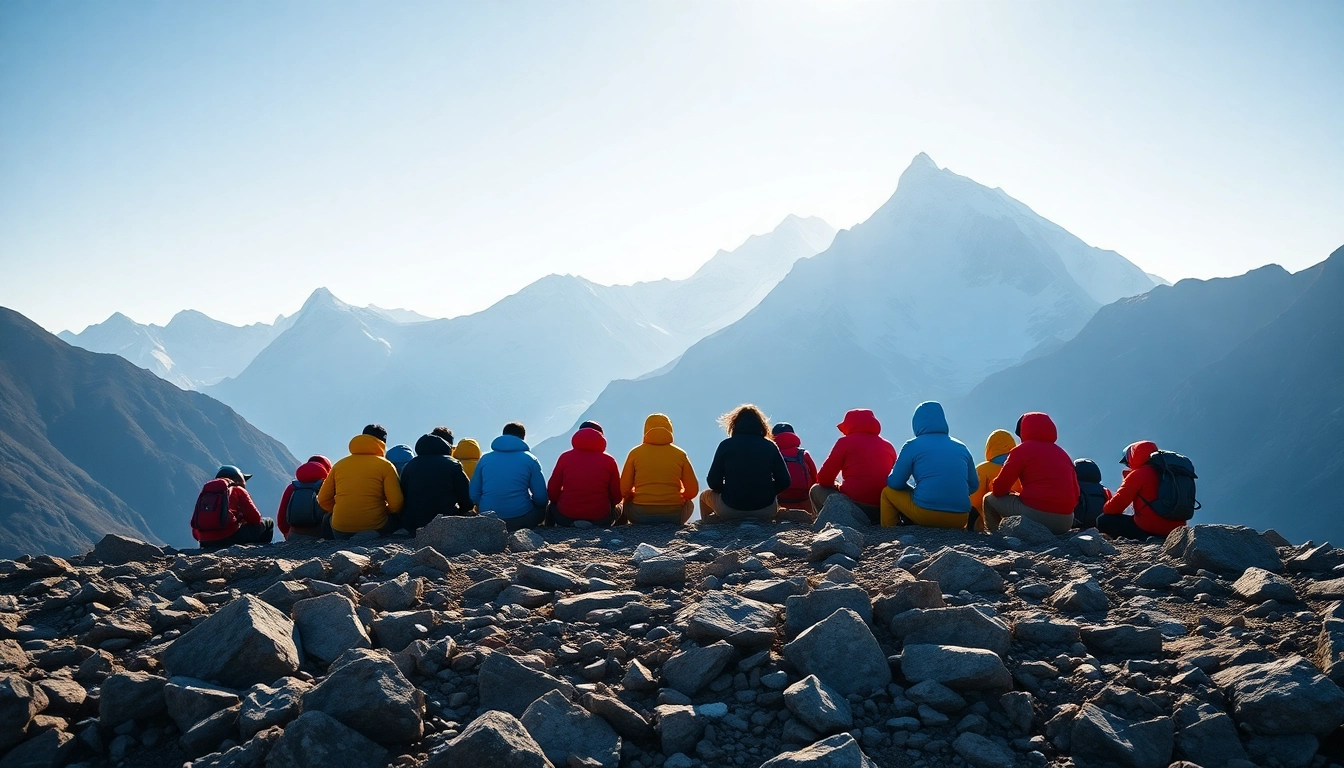Overview of Annapurna Base Camp Trek
The Annapurna Base Camp Trek, one of the most renowned trekking routes in the world, offers adventurers breathtaking views and an unforgettable experience deep within the heart of the Himalayas. It is not just a physical challenge; it is a journey through diverse ecosystems, rich culture, and stunning mountainous landscapes. For trekking enthusiasts, the allure of the Annapurna Base Camp Trek lies in its magnificent panoramas, cultural encounters, and the thrill of standing at an elevation of 4,130 meters (13,550 feet) at the base of the Annapurna massif.
What is the Annapurna Base Camp Trek?
Located in Nepal’s Annapurna Conservation Area, the Annapurna Base Camp Trek involves traversing a series of diverse landscapes that transition from lush subtropical forests to high-altitude alpine terrain. The trek typically spans a distance of about 115 kilometers (71 miles) over a range of 7-12 days, depending on the chosen itinerary. It allows trekkers to get intimately close to some of the world’s highest peaks, including Annapurna South, Annapurna I, and Machapuchare, providing ample opportunities for breathtaking photography and immersion in local cultures.
Key Highlights of the Trek
- Stunning Views: Trekkers are rewarded with panoramic views of the Annapurna range and Dhaulagiri, especially at sunrise from Poon Hill.
- Cultural Experience: The trek traverses through traditional Gurung and Magar villages, providing an insight into the local lifestyle and hospitality.
- Diverse Ecosystems: Trekking through various altitudes, trekkers witness rich biodiversity, from lush greenery to arid, rugged landscapes.
- Adventure Activities: Besides trekking, options for adventure sports such as paragliding in Pokhara add excitement to the journey.
Best Time to Visit Annapurna Base Camp Trek
The best times to embark on the Annapurna Base Camp Trek are during the pre-monsoon (March to May) and post-monsoon (September to November) seasons. During these periods, the weather is typically stable, featuring clear skies and favorable temperatures, which enhance the trekking experience. Spring (March to May) is characterized by colorful rhododendron blooms, while autumn (September to November) offers crisp air and striking mountain visibility. However, winter months (December to February) present their own charm, albeit with colder temperatures and potential snowfall, which can impact trail accessibility.
Planning Your Annapurna Base Camp Trek
Successful trekking requires careful planning and preparation. Understanding the necessary logistics, obtaining permits, and selecting the right gear are critical elements that can significantly impact your trekking experience.
Creating a Trek Itinerary
When planning your Annapurna Base Camp Trek, a well-structured itinerary is essential. Most itineraries range from 7 to 12 days, accommodating different paces and preferences. A popular itinerary includes:
- Day 1: Drive or fly to Pokhara.
- Day 2: Drive to Nayapul and commence the trek to Tikhedhunga or Ulleri.
- Days 3-7: Continue trekking through Ghorepani, Poon Hill, Bamboo, Deurali, and finally the Annapurna Base Camp.
- Days 8-10: Retrace the trek back to Nayapul and return to Pokhara.
Each day, trekkers should anticipate walking between 5 to 7 hours, allowing for acclimatization and enjoyment of the surrounding environment. It’s advisable to incorporate rest days, especially if trekking in higher altitudes.
Essential Gear for Annapurna Base Camp Trek
Preparing the right gear is crucial for a successful trek. Essential items include:
- Clothing: Layered clothing including moisture-wicking base layers, insulating middle layers, and waterproof outer layers.
- Footwear: Sturdy trekking boots with good ankle support and hiking socks.
- Backpack: A comfortable and waterproof backpack with sufficient capacity for personal belongings.
- Sleeping Gear: Sleeping bag rated for cold temperatures, particularly if you plan to stay in teahouses.
- First Aid: A basic first aid kit, including altitude sickness medication, blister treatments, and personal prescriptions.
Additional items like trekking poles, sunglasses, hats, and portable chargers are highly recommended to enhance comfort and safety during the trek.
Acclimatization Tips for Safe Trekking
Acclimatization is essential while trekking at high altitudes to prevent altitude sickness. Here are tips to acclimatize effectively:
- Gradual Ascent: Ascend slowly and take time to adjust to altitude changes.
- Stay Hydrated: Drink plenty of water to combat dehydration and support bodily functions.
- Listen to Your Body: Pay attention to symptoms of altitude sickness, such as headaches and dizziness, and seek assistance if necessary.
- Take Rest Days: Allow time to rest, particularly at higher altitudes like Machapuchare Base Camp before reaching the Annapurna Base Camp.
Experiencing the Annapurna Base Camp Trek
The true essence of trekking comes alive during the journey itself. From daily itineraries to cultural insights, every step in the Annapurna region offers an experience beyond mere physical exertion.
Daily Itinerary Breakdown for the Trek
A typical day on the Annapurna Base Camp Trek begins early in the morning. Trekkers should expect to wake up around 6-7 AM, enjoy a hearty breakfast, and set out to explore the trails. The days generally follow a structured routine:
- Morning: Start the trek by following well-marked paths and navigate through beautiful landscapes.
- Midday: Take a break for lunch in a local teahouse or scenic spot, immersing in the local culture.
- Afternoon: Continue trekking, gradually gaining elevation and capturing stunning views.
- Evening: Arrive at the day’s destination, rest, and reflect on the day over shared meals with fellow trekkers.
It’s essential to maintain a steady pace and enjoy the beautiful surroundings, allowing for brief stops to savor the tranquility of the mountain scenery.
Cultural Insights Along the Annapurna Base Camp Trek
The trek is not just about stunning landscapes; it’s also a rich cultural experience. As trekkers make their way through villages like Ghandruk and Chhomrong, they often witness traditional ceremonies, local festivals, and architecture that reflects the history of the Gurung and Tamang communities. Engaging with locals boosts cultural understanding and appreciation for their customs, hospitality, and cuisine.
Wildlife and Flora on the Route
The Annapurna region houses a diverse range of flora and fauna. Trekkers might encounter unique wildlife including Himalayan Tahr, snow leopards, and various bird species along the way. The changing altitudes reflect in the vegetation, transitioning from subtropical forests rich in oak and rhododendron to coniferous and alpine flora higher up. Being mindful and respectful of the natural environment enhances the trekking experience while promoting conservation efforts.
Challenges and Safety on the Annapurna Base Camp Trek
Though the Annapurna Base Camp Trek is a remarkable adventure, it also poses challenges that trekkers should prepare for. Understanding potential obstacles enhances safety and enjoyment throughout the trek.
Weather Considerations during the Trek
Weather conditions in the Annapurna region can fluctuate widely. Trekkers can expect sunny days followed by sudden rain or snow, particularly at higher elevations. Preparing for rapid weather changes is crucial.
- Monitor Weather Updates: Constantly check weather forecasts and be ready for precipitation.
- Dress Accordingly: Wear breathable yet waterproof clothing to stay dry and comfortable.
- Avoid Risks: If weather becomes severe, avoid trekking and take proper shelter until conditions improve.
Common Challenges Faced by Trekkers
Each trekker may face individual challenges, including physical exhaustion, altitude sickness, or injury. The following strategies may help mitigate these issues:
- Physical Preparation: Building cardiovascular strength and stamina before embarking on the trek prepares the body.
- Gradual Progression: Do not rush the pace; steadily move along the trails and take necessary breaks.
- Seek Help: If feeling unwell, communicate with fellow trekkers or guides promptly.
Safety Tips to Ensure a Smooth Trek
To enhance overall safety, follow these tips:
- Travel with a Guide: Employing an experienced guide can help navigate trails and handle emergencies.
- Invest in Quality Gear: Quality trekking shoes, appropriate clothing, and gear will ensure safety and comfort.
- Emergency Contacts: Keep emergency contacts and first aid supplies easily accessible throughout the trek.
Post-Trek Experience at Annapurna Base Camp
Reaching the Annapurna Base Camp is a monumental achievement and is often accompanied by a mix of emotions, from exhilaration to reflection. After experiencing the beauty and challenges of the journey, many trekkers find it rewarding to take a moment to absorb their surroundings and celebrate personal triumphs.
Reflection and Highlights of Your Adventure
After the trek, it’s essential to pause and reflect on the overall journey. Many trekkers express profound gratitude for the experiences, new friendships formed, and the chance to explore one’s limits. Summarizing memories, particularly the breathtaking moments at the base camp, boosts appreciation for the adventure.
Photographic Opportunities at Annapurna Base Camp Trek
Photography on the trek creates lasting mementos of the journey. Stunning views of Annapurna I and Machapuchare, the sunrise moments from Poon Hill, and capturing local life in villages provide excellent opportunities for photographers. Utilizing early mornings and late afternoons ensures the best lighting for breathtaking images.
Continuing Your Journey in Nepal
Following the Annapurna Base Camp Trek, numerous options exist for further exploration in Nepal. Many trekkers choose to visit nearby attractions like the serene Phewa Lake in Pokhara or delve into cultural excursions in Kathmandu, including visits to UNESCO World Heritage sites like Boudhanath Stupa and Patan Durbar Square. Extending your adventure allows for a deeper connection with Nepalese culture and the stunning natural landscape.



